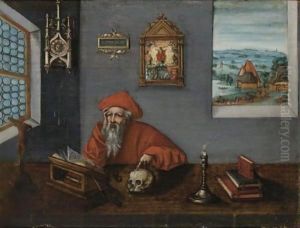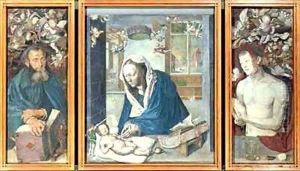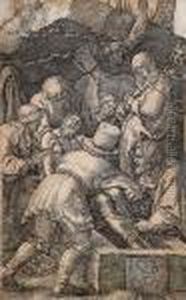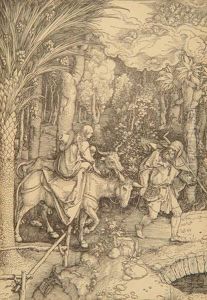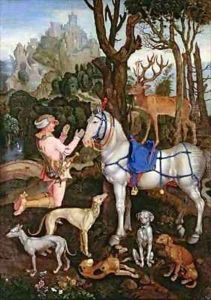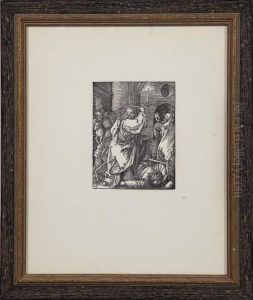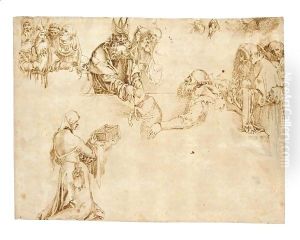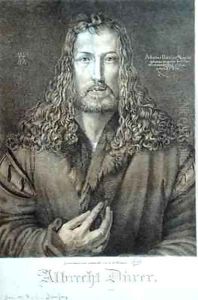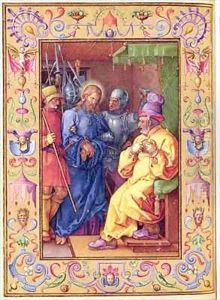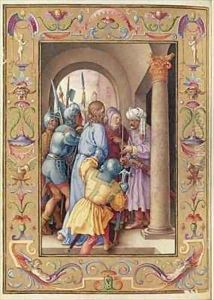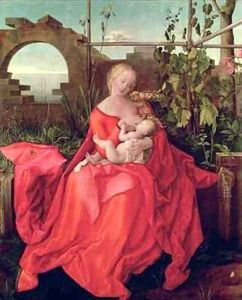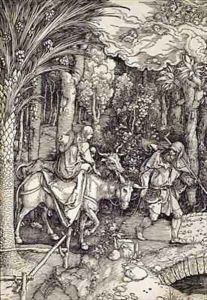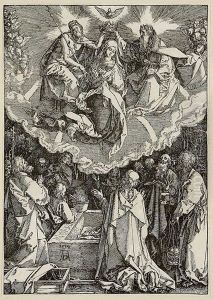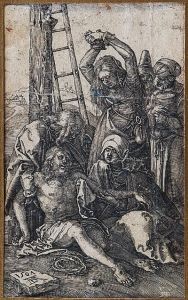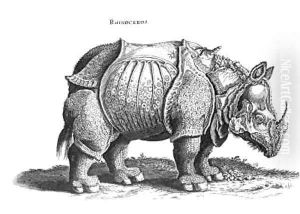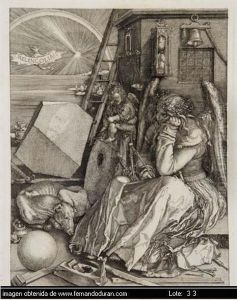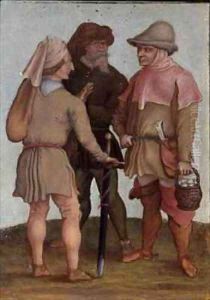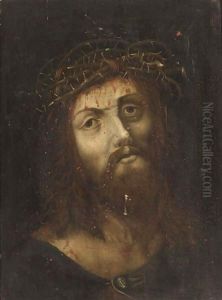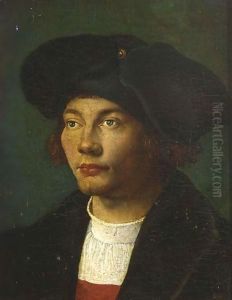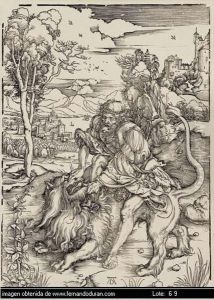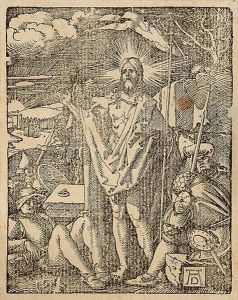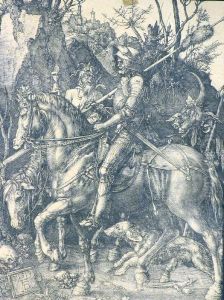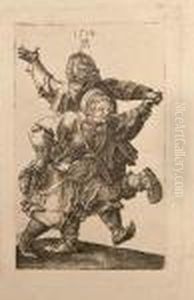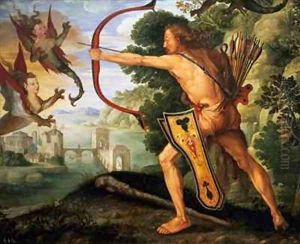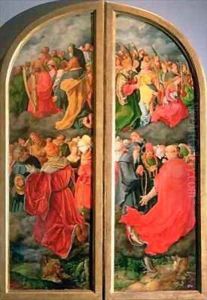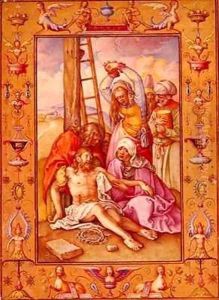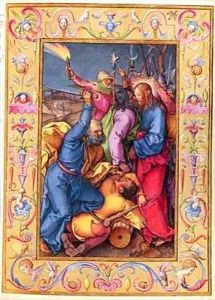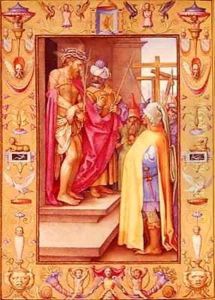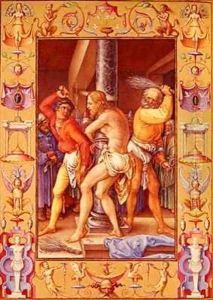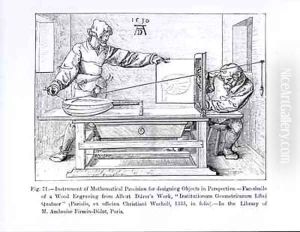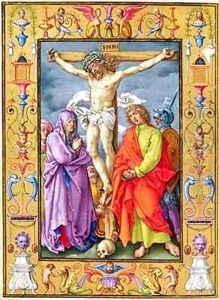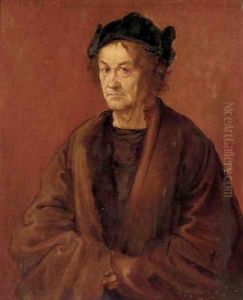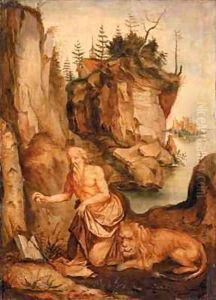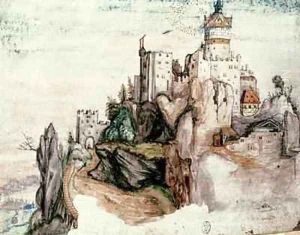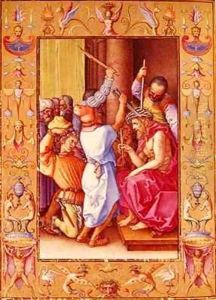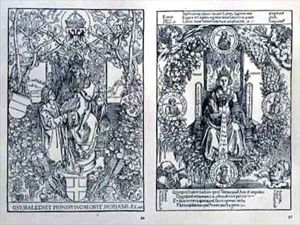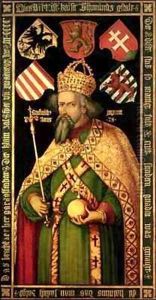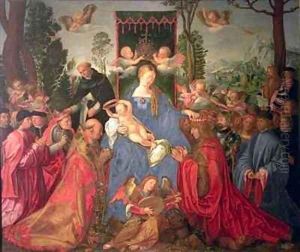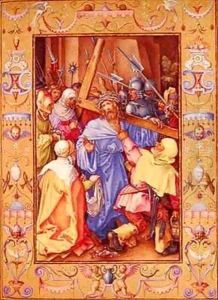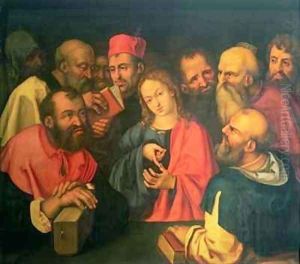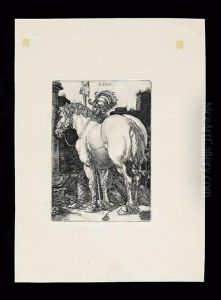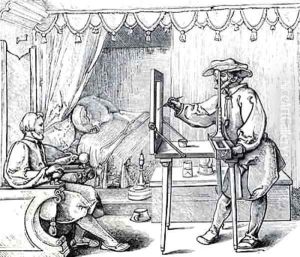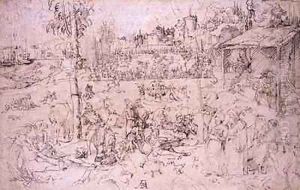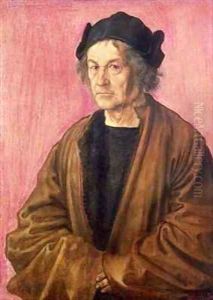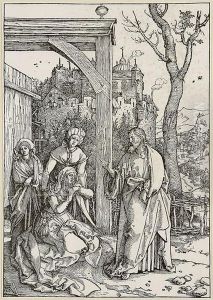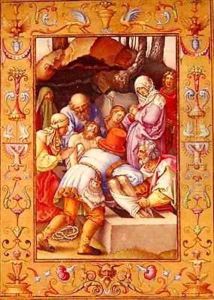Durer or Duerer, Albrecht Paintings
Albrecht Dürer was a German painter, printmaker, and theorist of the German Renaissance. Born on May 21, 1471, in Nuremberg, Holy Roman Empire, Dürer established his reputation and influence across Europe when he was still in his twenties due to his high-quality woodcut prints. He was trained in the workshop of his father, who was a goldsmith, and later in the workshop of Michael Wolgemut, where he would have been exposed to the art of woodcut design.
Dürer's work includes engravings, woodcuts, altarpieces, portraits, self-portraits, and watercolors, displaying his diverse talents as an artist. His woodcuts, such as the 'Apocalypse' series (1498), are particularly notable for their intricate detail and innovative compositions. He was also known for his high-quality series of three Meisterstiche (master engravings) including 'Knight, Death, and the Devil' (1513), 'Saint Jerome in his Study' (1514), and 'Melencolia I' (1514).
During his career, Dürer traveled to Italy, where he was influenced by the works of artists like Giovanni Bellini and Andrea Mantegna. His later works show a clear integration of the Italian art techniques of perspective, proportion, and anatomy into his Northern artistic heritage. Dürer was not only a skilled artist but also an intellectual and theorist. His treatises on geometry, perspective, and human proportions are a testament to his desire to understand the principles behind the art.
Dürer's influence extended beyond his own art; he was a figure of major importance in the dissemination of the Italian Renaissance in the Northern Europe and the development of a German Renaissance style. His theoretical works also influenced subsequent generations of artists, both in terms of practical technique and in the aesthetic understanding of art.
Albrecht Dürer died on April 6, 1528, in Nuremberg. His legacy is preserved in the extensive body of work he left behind, which continues to be celebrated for its artistic merit and historical importance.
